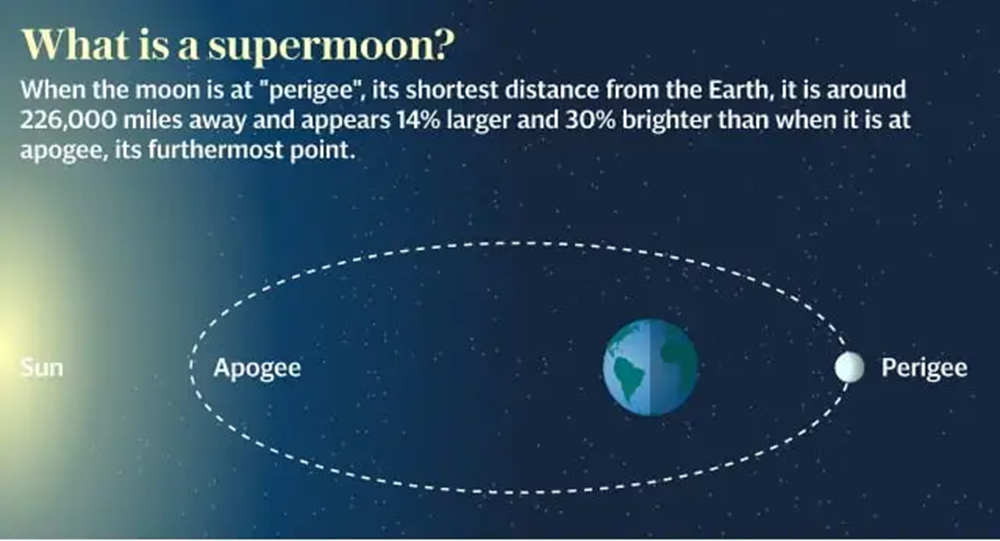SUPERMOON

Copyright infringement not intended
Context: July 2023 will mark the beginning of a series of four Supermoons that will take place this year when the moon will look brighter than usual. The Supermoon in July will also be closer to Earth by 14,000 miles.
Details
- The Supermoon will reach its full phase on Monday, July 3, 2023, at 7:39 am (ET).
- According to the Old Farmer’s Almanac, the distance between the Earth and the moon during the Supermoon in July 2023 will be 224,895.4 miles (361,934 kilometres).
- The Supermoon in July has several names, depending on the region and the culture. One of the most common names is Buck Moon because this is the time of the year when male deer grow new antlers.
- There are usually 12 full moons in a year, but in 2023 there will be 13. The months of August and September will have two Supermoons each. The August Supermoons are called Sturgeon Moon and Blue Moon, while the September Supermoon is called the Harvest Moon.
Supermoon
- A Supermoon is a phenomenon that happens when the moon is at its closest point to the Earth in its orbit and it is also a full moon. This makes the moon appear larger and brighter than normal.
- It is about 14% larger and 30% brighter than a typical full moon, which means it can illuminate the landscape more vividly and cast longer shadows.
- It can cause higher tides and stronger gravitational effects on Earth, which can affect the weather, wildlife and even human behaviour.
- It can create optical illusions and atmospheric effects that enhance its beauty and mystery, such as the moon illusion, which makes the moon, appear larger near the horizon than when it is high in the sky, or the lunar corona, which is a ring of coloured light around the moon caused by water droplets in the air.
|
PRACTICE QUESTION Q. What are some effects of a Supermoon on Earth? 1. Higher tides and stronger waves 2. Lower tides and weaker waves 3. Increased volcanic activity and earthquakes 4. Decreased volcanic activity and earthquakes How many of the above statements is/are correct? A) Only 1 B) Only 2 C) Only 3 D) All Answer: A Explanation: A Supermoon can cause higher tides and stronger waves on Earth, due to the increased gravitational pull of the moon. However, these effects are not significant enough to cause major disasters or disruptions. |




1.png)
